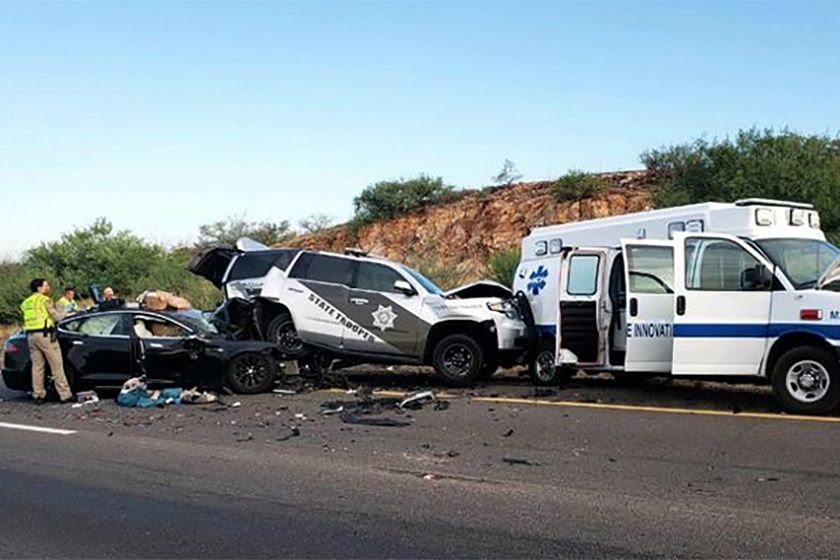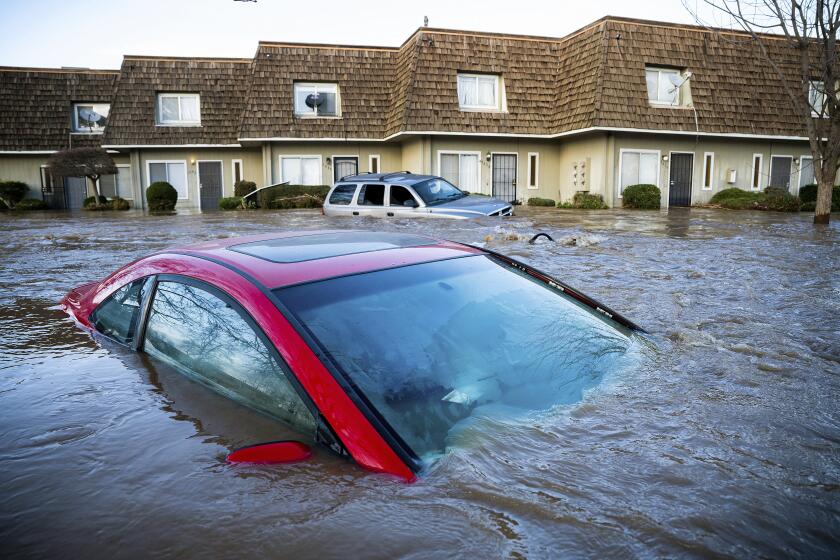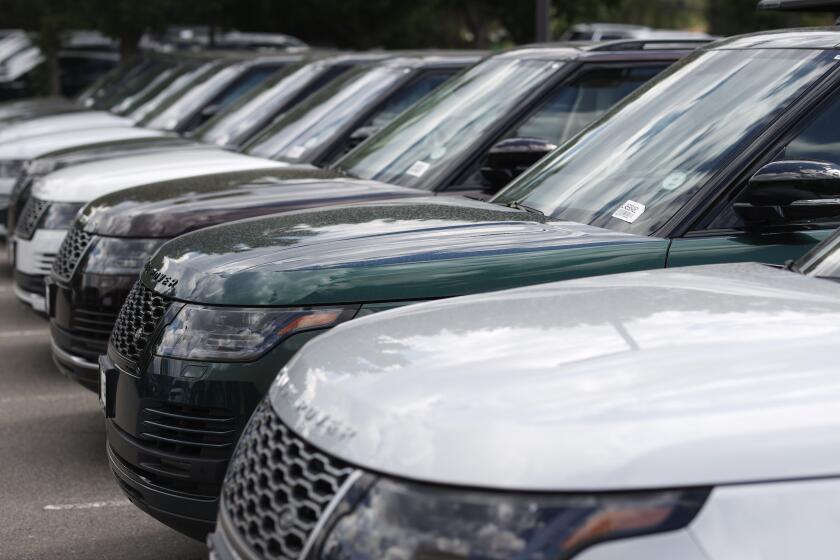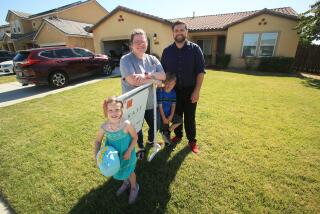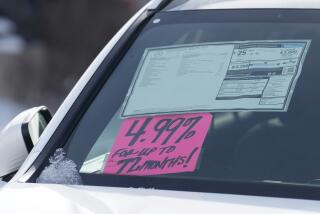Car debt piles up as more Americans owe thousands more than vehicles are worth
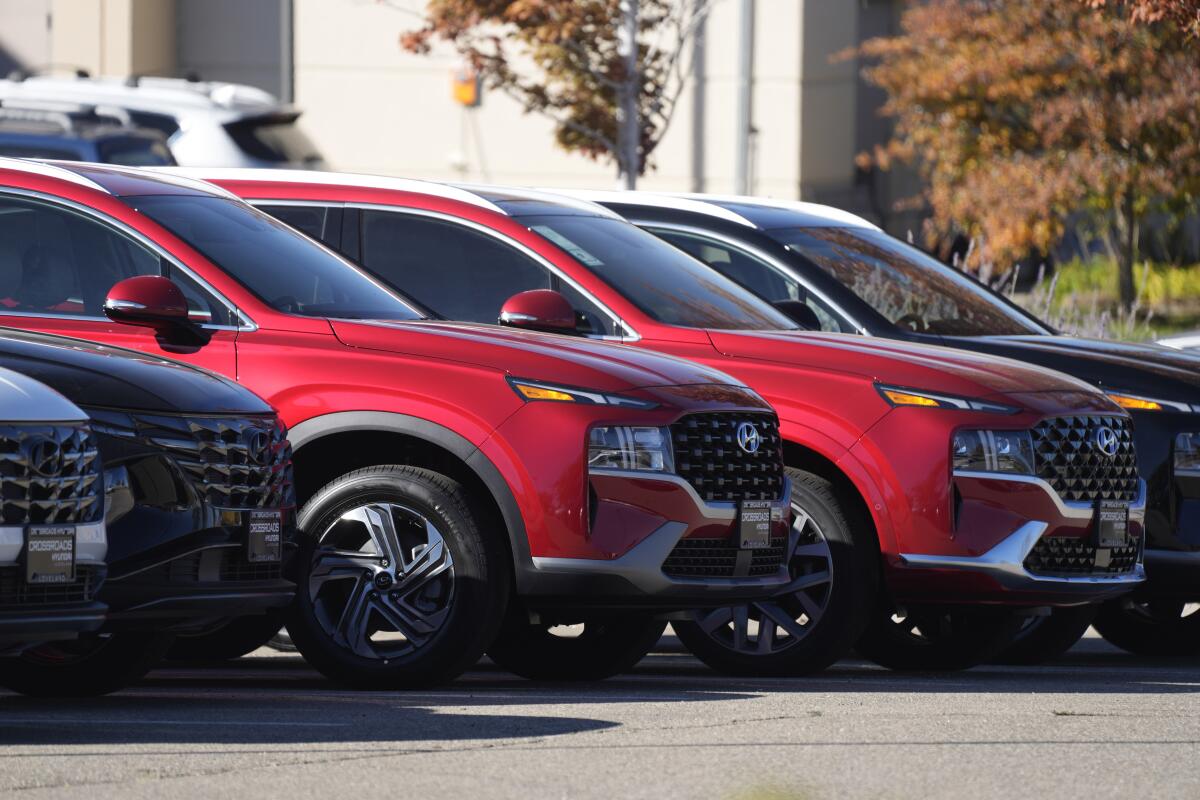
- Share via
Chris Martin knew he needed a bigger car as the birth of his fourth child approached, but he and his wife were already $14,000 underwater on their two vehicles.
So the couple proposed an unusual two-for-one deal with an Atlanta-area auto dealer in 2020: trading in both of their vehicles so they could afford a three-row Ford Explorer. Their total loan after factoring in negative equity, a service contract, fees and other costs ballooned to $66,000 on the $49,000 Explorer.
Despite a lot of progress on the debt, he feels uneasy. “I don’t want to be paying interest on cars that I don’t even have anymore,” said Martin, a 36-year-old data engineer.
The buildup in negative equity — or the amount that debt exceeds a vehicle’s value — is rattling consumers and raising alarms within the industry.
Though it’s not unusual for drivers to carry negative equity, some dealers say more people are arriving at their lots up to $10,000 underwater, or “upside down,” on their trade-ins. They’re buying at still-sky-high prices and rolling debt from one car to another and even onto a third. Loans are commonly stretching to seven years.
Hyundai’s and Kia’s popular new EVs are turning heads and sales were skyrocketing — until the Inflation Reduction Act took their customer rebates away.
“As trade-in values begin to cool, each month more and more consumers will find themselves falling from positive to negative equity,” said Ivan Drury, director of insights at auto-market researcher Edmunds. “Unless American car shoppers break their habit of buying again too soon, we’ll see the negative equity tide continue to rise.”
Even if the U.S. economy avoids a recession this year, consumers will likely struggle to make payments on their auto loans, especially with the Federal Reserve planning to keep raising interest rates. The average new-car interest rate rose to 6.9% in January from 4.3% a year earlier, according to Edmunds. With car prices still elevated, demand high and inventory levels relatively low, Ford Motor Co., General Motors Co. and other automakers continue to rake in sizable profits.
For the typical American, a new car is increasingly out of reach. Today, about 2 out of 13 people are making monthly car payments of $1,000 or more. For many, there’s no choice: They have few or no public transportation options and need a car to get to work, bring children to school and buy groceries.
“Because these car loans are generally unaffordable at the outset, that means that every month, borrowers are getting closer to the financial edge,” said Kathleen Engel, a law professor at Suffolk University.
The cost of new vehicles has risen 20% since the start of the pandemic, while used vehicles are still up 37% even after cooling in the fall. For a brief period, car owners hit a topsy-turvy market where they could sell some used cars for more than they paid for them. That helped negative equity plummet earlier in the pandemic.
Federal regulators forced a recall of Tesla’s robot-car technology, but the move allows drivers to continue to use it before the defects can be fixed.
But as more consumers deplete savings accumulated during the pandemic, they’re falling underwater again.
For trade-ins that carry negative equity, the average amount is approaching pre-pandemic levels at $5,500, according to Edmunds data. The surge in prices and prevalence of 84-month loans are fueling concern among consumer advocates and within the auto industry.
Pete Kesterson is the general manager of a dealership in Falls Church, Va. On one side of his lot is the Volvo showroom, and on the other is the Kia showroom. He’s much more concerned about the customers shopping for Kias — who rely on financing more heavily — than he is for Volvo buyers who he says often pay with cash.
“It’s going to come, and it’s going to bite us,” said Kesterson, referring to negative equity, which he believes will worsen. “Now, we’re selling the cars for so much more, and financing for longer, at a much higher interest rate. There are some challenges coming down the pike.”
Negative equity has already bitten Shawna Ballou, a 45-year-old mother of five from Tacoma, Wash., who feels “trapped” in her Ford Escape. Four years ago, she traded in a Chevy Malibu and bought a 6-year-old Escape for around $16,000. After including the negative equity on her trade, taxes and other fees, she financed more than $25,000 and is paying it off over seven years.
Flooding across California has damaged hundreds — if not thousands — of cars. Over the next month or so, some of those soggy cars will be sold at auctions, eventually making their way onto dealership lots. Here’s what to know about these water-damaged rides.
She researched the life expectancy of her car, and she’s worried she’ll wind up owing on a car that won’t even run.
“I can’t even get anyone to refinance me, because the value of the car does not add up,” said Ballou, who’s working two jobs and trying to get her own business off the ground.
The upswing in negative equity is on the radar of officials at the U.S. Consumer Financial Protection Bureau. They are closely monitoring it now that the safety net of selling a used car to climb out of debt is disappearing.
“Consumers may have been less likely to find themselves underwater on car loans because of rising used-car prices,” said Ryan Kelly, acting auto finance program manager at the CFPB. “That may be changing.”
To respond to higher vehicle costs, lenders have kept extending the length of auto loans. Companies such as Upgrade Inc., which offers auto refinancing, also are tightening standards for who qualifies for financing — a trend they predict will continue if the job market worsens and rates keep climbing.
A new bill, AB 251, introduced in the California Assembly would look into the possibility of raising vehicle registration fees for heavier vehicles.
“The more likely scenario is the worsening of economic conditions combined with the prospects of a continued decline in car prices, making it harder for consumers to qualify for the car they want,” said Renaud Laplanche, Upgrade’s co-founder and chief executive.
For now, even seven-year loans are performing well, said Margaret Rowe, a senior director with Fitch Group Inc. who’s focused on auto financing and asset-backed securities. But if the prices of cars stay high and lenders keep extending loan terms, opting to offer them to borrowers with lower credit scores, that could change, she said.
In January, severely delinquent auto loans hit their highest rate since 2006, based on Cox Automotive data.
One wild card for consumers is the fluctuation in used-car values. After a historic climb during the pandemic, values fell 13% from their peaks as of January, but suddenly climbed again in February, according to the Manheim Used Vehicle Value Index. If they fall further, anyone who bought at the top of the market will fall further into the trap of negative equity.
Subprime consumers coming in with negative equity and looking to buy another car are particularly vulnerable, said Todd Nelson, senior vice president of strategic partnerships at LightStream, part of Truist Bank.
“They’re just continuing to amass debt in a way that’s not very financially responsible,” Nelson said. “For folks in that space, if they can afford to, they’d be far better off staying in that vehicle.”
More to Read
Inside the business of entertainment
The Wide Shot brings you news, analysis and insights on everything from streaming wars to production — and what it all means for the future.
You may occasionally receive promotional content from the Los Angeles Times.

